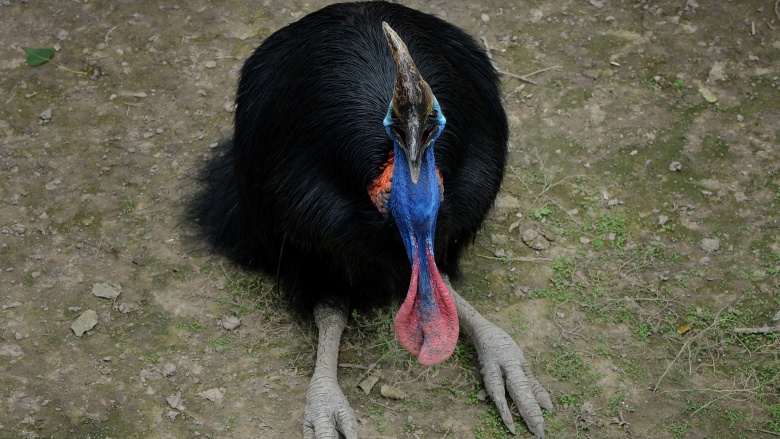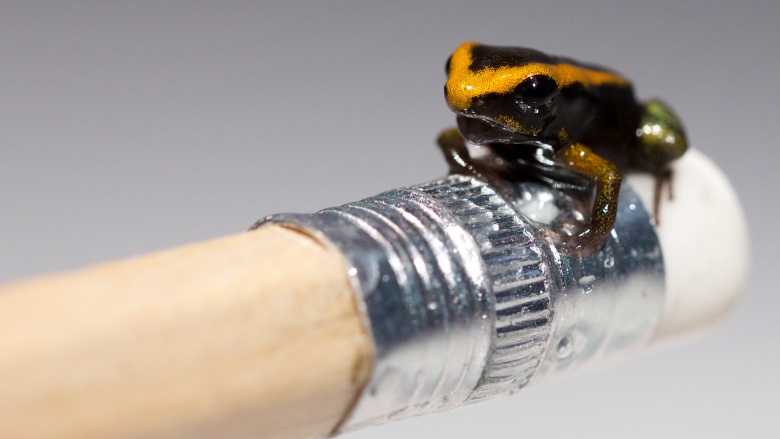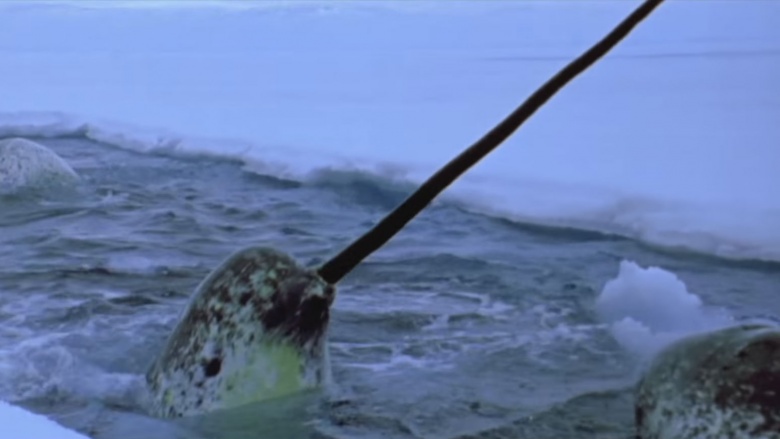Animals That'll Kill You On Nearly Every Continent
Some animals are cute and cuddly, but others are pretty deadly, and they're all over the planet. To be fair, most won't attack people outright. Yet, they still possess the teeth, claws, and poisons to dispatch a person should the need arise. Enjoy your nightmares, puny human.
Cassowary (Australia)
While the people of Australia are kind and friendly and the weather and land are both beautiful, every animal in Australia wants to kill you—even birds like the cassowary. Don't be fooled by the natural skittishness of these six-foot-tall monsters. Cassowaries become aggressive when provoked, and they're capable of defending themselves because they're packing. The cassowary's weapon of choice: five-inch, spearlike claws growing from its feet, which can easily "sever an arm or eviscerate an abdomen with ease," according to Ernest Thomas Gilliard's Living Birds of the World. What they do when switching to attack mode is charge their victims, delivering a series of bicycle kicks, aiming for the abdomen or, better yet, the jugular. It's surprising that no one's thought of a way to weaponize these killing machines, like some have with this this next animal...
Poison Dart Frog (South America)
The beautiful coloring of the poison dart frog belies its toxic nature. It's actually the most poisonous animal on the planet, according to the BBC. For instance, the golden variety—they're a colorful species—contains enough poison to kill at least ten grown men, which is pretty good from something that's only six centimeters long. Incidentally, its name comes from Amerindians' tipping their darts with these frogs' toxins.
And the frogs don't even need to bite you. Using their vivid chromaticity and relatively big, needy eyes, they trick unsuspecting victims into picking them up. Then, they secrete their toxins, and it's ouch city. While touching a poison frog won't kill you unless the toxins enter your bloodstream, it still brings new meaning to the phrase, "look but don't touch."
Loa Loa (Africa)
On a continent populated by lions, crocodiles, and hippopotami, the most feared creature is actually a worm. The loa loa, also known as loiasis and the African eye worm, is a parasite gifted upon humans by the bites of deer and mango flies. Once transmitted, the loa loa begins boring through its victim's skin at a torturous less-than-one-centimeter per minute. Despite the flashy name, the African eye worm doesn't set up camp in its host's ocular cavities exclusively. It takes a grand tour of the entire body, making stops as they go. Most often, their vacation spot of choice is the lungs, according to the CDC. As loa loa meander about, they cause itching, swelling, and possible kidney damage, which can be deadly. The best part: they can often be seen as they move beneath a person's skin, and especially when they mosey through the eyes, which looks similar to what Charlie Holloway sees in his eye in the movie Prometheus. Leave it to Africa to have a creature that's straight out of a sci-fi-horror film. Want to see the loa loa in action? Go ahead and Google at your own risk. It's disgusting.
Giant Panda (Asia)
Sure, pandas are cute and cuddly, but that's how they get you. While their captivity purports the docile, fluffy stereotypes humans have heaped on these endangered creatures, pandas are anything but, according to the BBC. To begin, pandas are actually carnivores and have the necessary accouterments, including teeth, claws, and an incredibly strong bite force, tempered by chewing on bamboo. And they can use these tools with deadly efficiency. In March 2015, a Chinese villager almost lost his leg after a panda being chased by officials decided to chomp down on him. Captive pandas aren't any less dangerous either, the most notorious being Gu Gu, a denizen of the Beijing Zoo. As of this writing, Gu Gu has hospitalized three very surprised men who thought it'd be a good idea to climb into his enclosure. With that kind of record, it seems like humans face more danger from them than the other way around.
White-Tailed Deer (North America)
Yup, Bambi has it in for you. How white-tailed deer kills people varies from deer to deer, but they have two main methods of attack. The first and most common is throwing themselves in front of our cars as we drive. In this fashion, deer manage to kill 130 people each year, with a record 211 in 1994, according to the Department of Transportation. They've even begun charging onto airport runways in attempts to up their body counts. The other, rarer manner of death by deer occurs from deer actually attacking people. With their sharp hooves and pointy antlers, deer are able to eviscerate any would-be deerstalkers or anyone else unlucky enough to cross their paths, as what happened to a Texas man in 1990, according to the Orlando Sentinel. Truly, the hunters are becoming the hunted.
Narwhal (Europe)
Part of what makes these Arctic Ocean denizens so dangerous is the fact that humans know so little about them due to their elusive nature. The most mysterious thing about them is the tusks growing out of their faces. Numerous theories abound for their presence. Some scientists at Harvard and the National Institute of Standards claims it's a sensory organ filled with millions of nerve endings able to "detect subtle changes of temperature, pressure, particle gradients and probably much else," according to the New York Times. Other scientists believe it's used for mating. But based on appearances alone, these ten-foot-long spears are perfect for skewering unsuspecting Inuits. Scientists will try to tell you there's no evidence of a narwhal ever using its tusk as a weapon, but that's just because they refuse to leave one survivor alive to tell the tale. Never turn your back on a narwhal.




